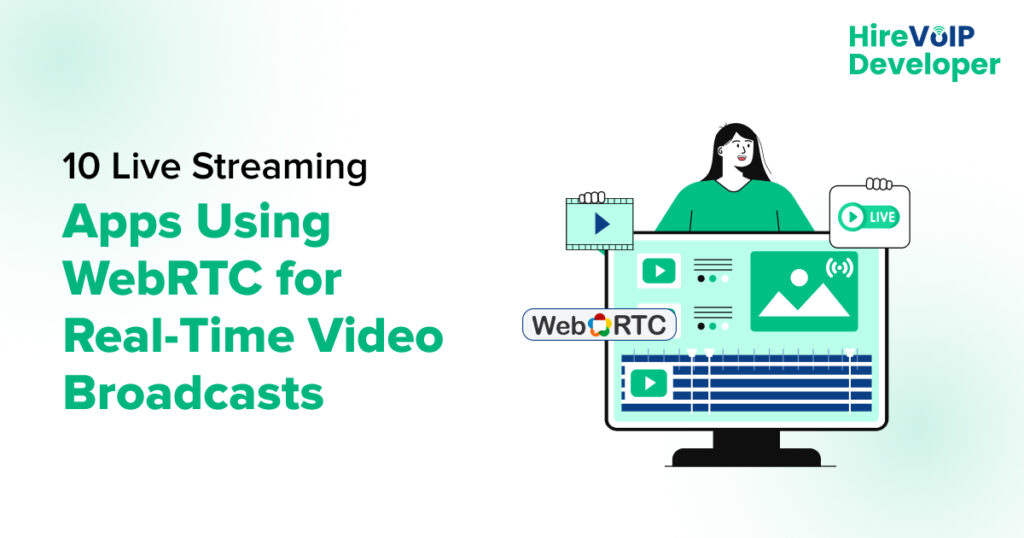In a world driven by instant connections, live streaming has emerged as one of the most engaging ways to interact with audiences. But what makes this technology so quick and responsive? The magic behind many live-streaming apps is WebRTC (Web Real-Time Communication), which powers direct audio, video conference solutions, and data transfers over the web. The open-source standard of WebRTC has made high-quality live streaming accessible and scalable for platforms of all sizes, all without requiring plugins or external downloads.
For those looking to understand how WebRTC enhances live streaming, this article explores 10 popular apps that use WebRTC to bring real-time streaming to life. If you’re searching for the perfect WebRTC streaming solution, these examples will help you navigate the options available, each with unique strengths that could match various broadcasting needs.
What Is WebRTC and How Does It Work?
WebRTC is a technology that enables real-time video and audio communication directly in the browser without requiring external plugins. In technical terms, WebRTC establishes peer-to-peer connections, allowing users to transmit media data directly, bypassing traditional server-based setups.
The process starts with session initialization via signaling protocols, followed by network discovery and peer connection establishment. Secure data transfer is achieved using encryption standards like DTLS and SRTP. By enabling real-time streaming technologies, WebRTC delivers high-quality, low-latency experiences ideal for live events and interactive broadcasts.
Whether you’re building a browser-based live streaming platform or exploring cutting-edge communication tools, WebRTC’s versatility ensures it remains at the forefront of real-time applications.

Now, let’s dive into the top live-streaming apps leveraging WebRTC.
Top 10 Live Streaming Apps Using WebRTC
Here are the best 10 Live-streaming Apps using WebRTC are given below:
1. OBS Studio with WebRTC Integration
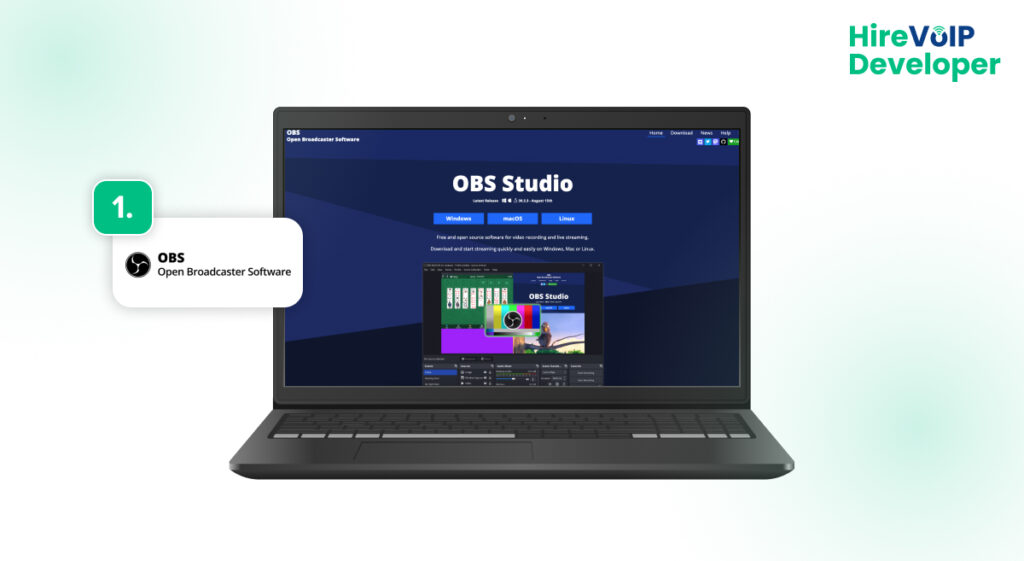
OBS Studio, an open-source streaming software, doesn’t have WebRTC built-in but can be integrated through plugins and third-party services. OBS is known for professional-quality streaming, with advanced features like screen capture, scene transitions, and audio mixing, making it popular among professional broadcasters.
How It Enhances Streaming Quality
With WebRTC integration, OBS enables low-latency streaming for webinars, presentations, and other high-quality live broadcasts. OBS and WebRTC create a robust real-time streaming environment, ideal for those needing advanced controls.
2. Jitsi Meet
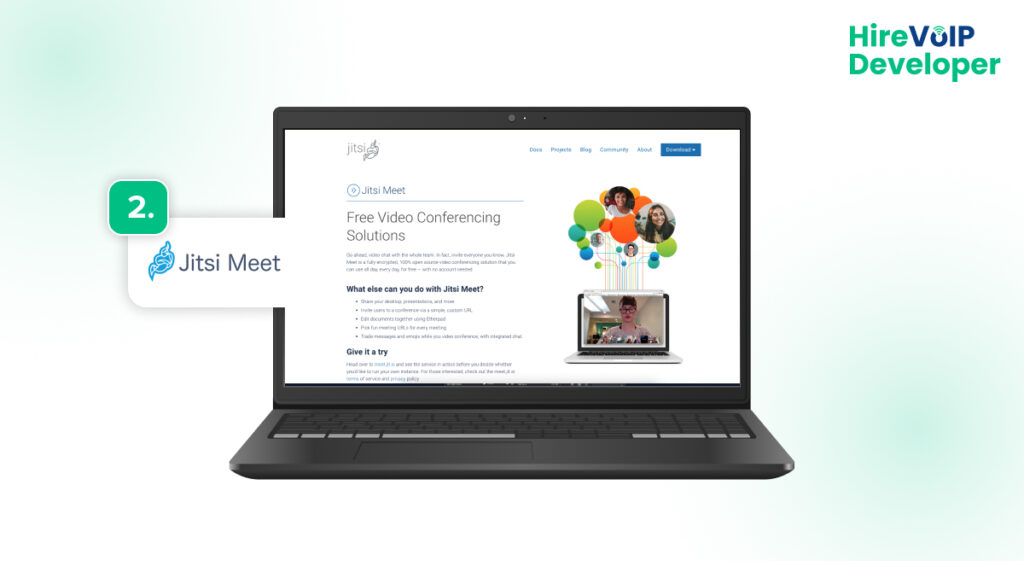
Jitsi Meet is a free, open-source video conferencing platform that relies heavily on WebRTC. Its flexibility allows users to host video calls directly from their browsers, with no downloads needed. Jitsi is popular among businesses, educational institutions, and anyone looking for privacy-centered conferencing options.
The Power Behind Real-Time Conferencing
As a browser-based live streaming tool, Jitsi Meet benefits from WebRTC’s low-latency capabilities. It offers smooth and instantaneous video for teams or communities, making Jitsi a prime example of how real-time streaming technologies enhance online interactions.
3. Talky
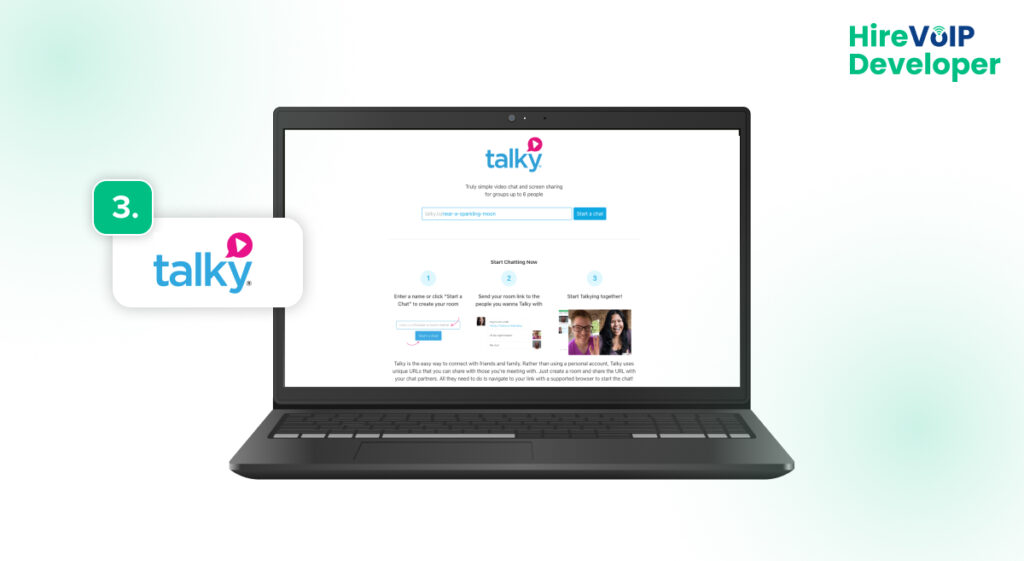
Talky focuses on simplicity and ease of use. It allows users to create video chat rooms by simply sharing a link. It’s a lightweight WebRTC-powered app aimed at casual users who don’t require advanced conferencing tools but want a reliable platform for video calls.
What Makes It Fast and User-Friendly
WebRTC’s ability to operate directly from the browser aligns with Talky’s no-fuss, no-download philosophy, allowing for a seamless experience even for users unfamiliar with technology.
4. BigBlueButton
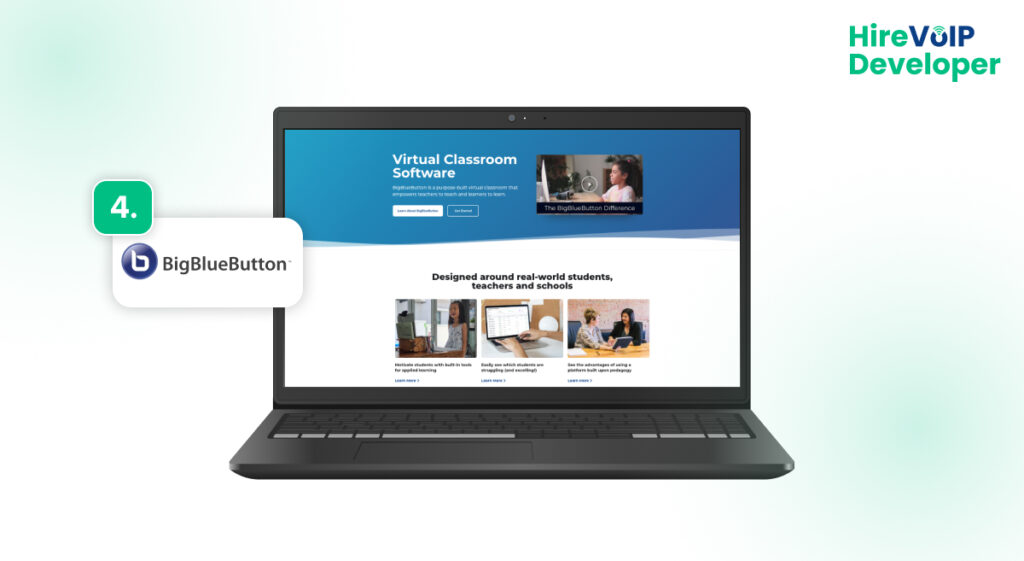
Designed for online learning, BigBlueButton is open-source virtual classroom software. Its features, such as presentation sharing, breakout rooms, and multi-user whiteboards, make it popular with educators.
Why It’s Ideal for Virtual Classrooms
BigBlueButton’s adoption of WebRTC enables smooth video and audio streaming that doesn’t interrupt the learning process, keeping real-time communication consistent, especially in settings where interaction is vital.
🌍 Reach your global audience in real-time with custom WebRTC development.
5. Google Meet
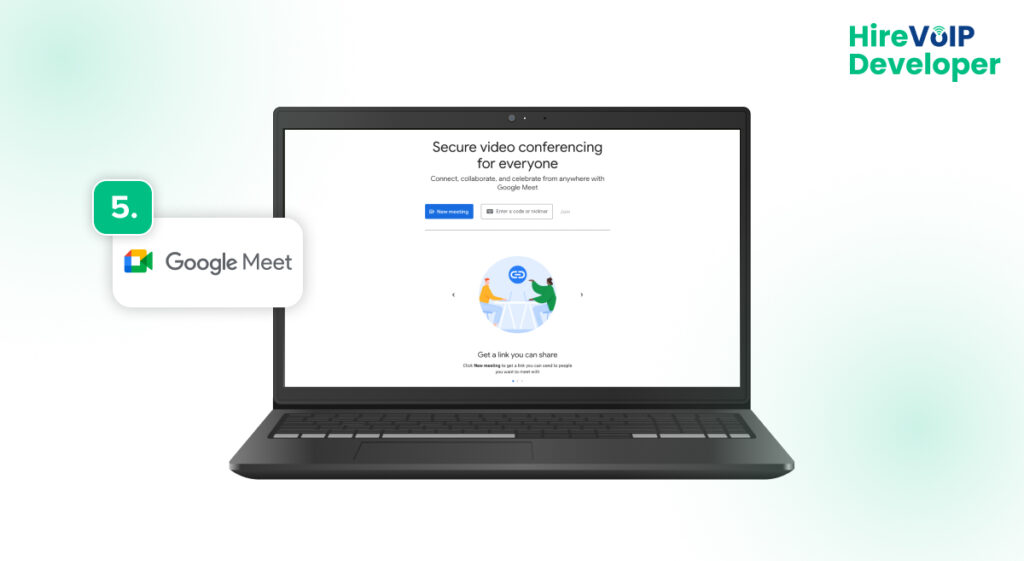
Google Meet, Google’s video conferencing app, has become a staple in both professional and personal spaces. Known for its reliability and security, Google Meet is widely used by organizations for meetings, webinars, and remote work.
How It Delivers Reliable Connections
WebRTC empowers Google Meet to function seamlessly in the browser without needing plugins, making it accessible and reliable across various devices. This integration helps keep latency low, ensuring high-quality video and audio for participants.
6. Houseparty
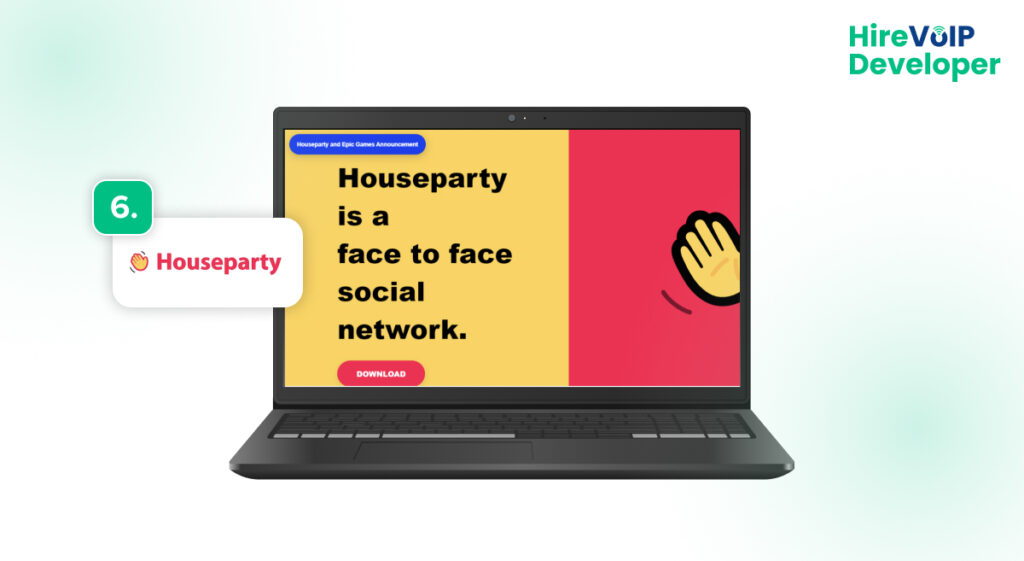
Houseparty, known for its interactive, casual video chat interface, was a go-to platform for group hangouts and virtual gatherings. Although recently discontinued, Houseparty leveraged WebRTC’s low-latency framework, allowing real-time interaction with interactive games and features.
What Sets It Apart for Interactive Video
WebRTC enabled Houseparty’s unique combination of video chat with live games, bringing people together through real-time, interactive experiences in an innovative way.
7. Whereby

It offers a unique approach to video conferencing with a no-download policy and a user-friendly interface. It’s perfect for freelancers, small teams, and remote workers who need quick, accessible video communication without setup hassles.
The Secret to Seamless Video Meetings
With WebRTC, Whereby provides browser-based live streaming that’s lightweight, fast, and highly accessible, supporting real-time conversations with minimal delay and high-quality audio/video.
8. StreamYard

StreamYard is a browser-based streaming solution popular among content creators for hosting live broadcasts on platforms like YouTube, Facebook, and LinkedIn. It’s highly customizable, allowing users to easily brand their live streams and add guest speakers.
Why It’s Perfect for Multi-Platform Streaming
WebRTC’s efficiency allows StreamYard to handle video streams smoothly, which is crucial for live streaming to multiple platforms simultaneously. The low-latency streaming and the WebRTC framework make it a top choice for live video production.
9. Zoom (Web Version)
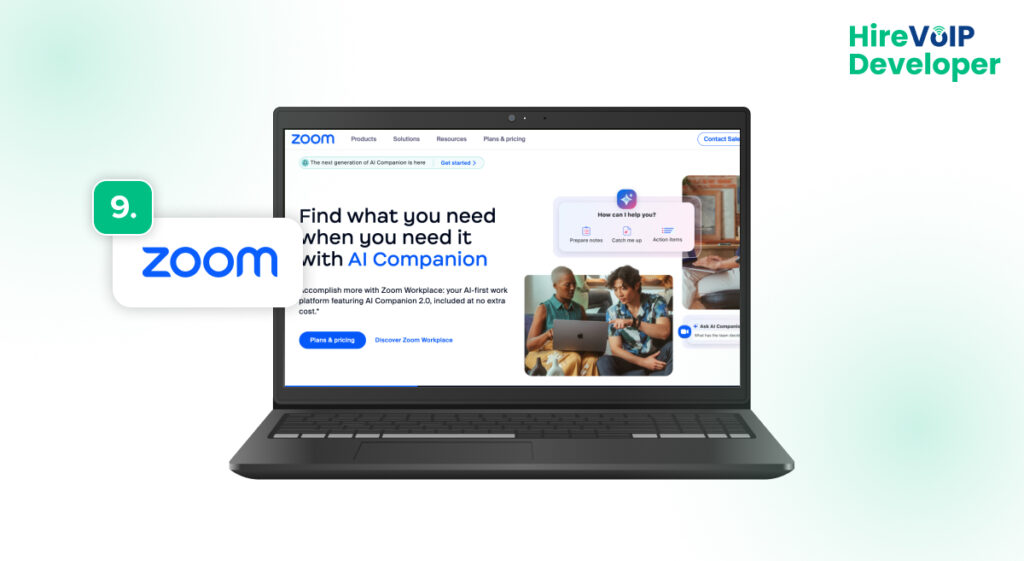
Zoom has become synonymous with video conferencing. Its web version utilizes WebRTC to enable easy access without requiring downloads. Zoom’s platform is used by millions worldwide for meetings, webinars, and live events.
How It Enables Cross-Device Flexibility
The web-based Zoom experience depends on WebRTC to deliver stable, low-latency video and audio. WebRTC’s cross-browser compatibility makes it easier for users to join from any device, ensuring high-quality communication.
10. BlueJeans
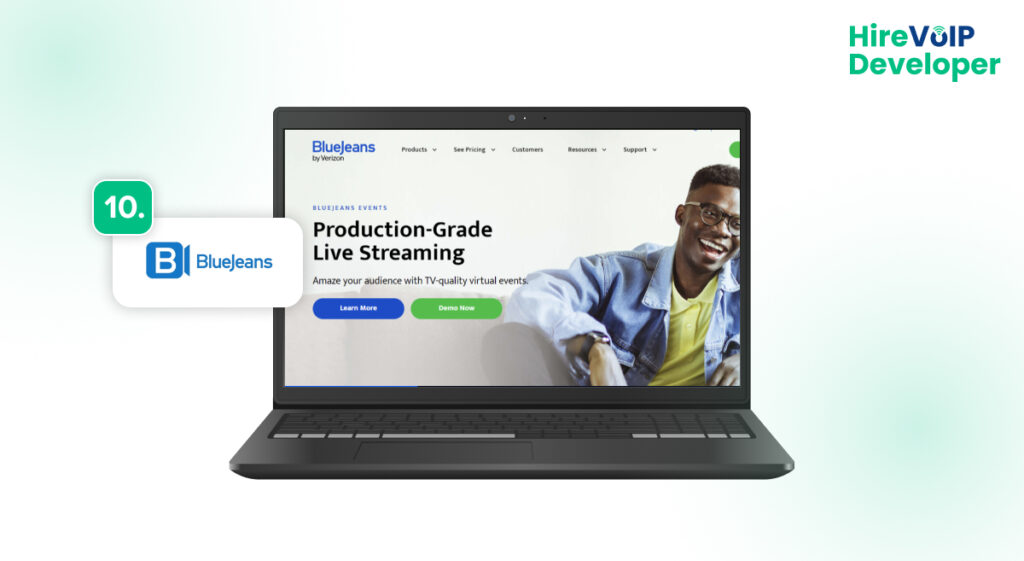
BlueJeans is a video conferencing platform which is known for its professional features. It supports webinars, events, and conference calls and integrates easily with various productivity tools, making it a good choice for enterprise users.
Why It Excels for Professional Video Calls
BlueJeans leverages WebRTC to provide low-latency video streaming that’s crucial in maintaining a professional quality for remote collaboration. The real-time streaming enabled by WebRTC ensures that meetings run smoothly, with minimal delay and superior quality.
Why Choose WebRTC for Live Streaming?
In today’s streaming ecosystem, where speed, accessibility, and reliability are essential, WebRTC has emerged as an optimal solution. Its browser-based capabilities cater to users’ needs for quick access, real-time feedback, and seamless streaming experiences. Here’s why WebRTC stands out among real-time streaming technologies:
- Low Latency: WebRTC’s peer-to-peer connections enable low-latency video and audio transmission, which is essential for interactive streaming and events.
- Scalability: WebRTC is flexible enough to support small-scale apps or expand to support large audiences, depending on the app architecture.
- Security: WebRTC uses encryption protocols, ensuring the privacy and security of transmitted media.
- Browser-Based: Users can join streams directly from their browsers, eliminating the need for plugins or additional software.
📺 Inspired by these live streaming apps? Let’s build your own WebRTC solution.
How to Get Started with WebRTC Streaming Solutions
For anyone looking to integrate WebRTC into their applications, having a knowledgeable development partner can make a significant difference. Whether it’s ensuring optimal WebRTC integration, handling latency challenges, or customizing features to fit your business model, the right team can bring these solutions to life with precision and reliability.
For businesses seeking expert assistance in WebRTC integration and custom VoIP development, Hire VoIP Developer offers specialized services to guide and support every stage of development. From real-time streaming solutions to comprehensive VoIP services, their expertise can help create high-quality, future-ready applications tailored to your needs.


